By Sarah Lozanova, Solar Energy Copywriter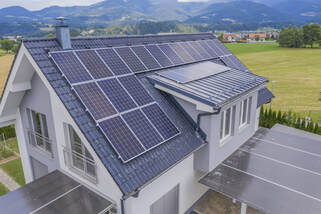 The home solar market is booming right now! Electricity rates are rising across the United States, and the federal solar tax credits recently increased to 30% through 2032. As a result, more solar companies are springing up all the time. Although some are reputable companies with solar energy expertise, others aren’t. If you are thinking about going solar, beware of scams and deals that seem too good to be true. Read the fine print before signing a contract and understand your financial obligations before moving forward. Red Flags Of A Solar Panel ScamHow do homeowners identify a good deal from a solar energy scam? We’ll help you spot the red flags so you can identify quality opportunities.
Red Flag #1: Scam Offers For Free Solar Panels Offers for free solar panels or solar panel systems paid for by the government are likely to be scams or misleading. In many cases, these offers require homeowners to lease or sign a power purchase agreement (PPA) rather than own the solar equipment. By Sarah Lozanova, Solar Energy Writer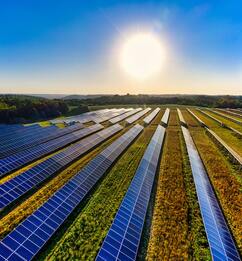 Power outages due to severe weather are on the rise. An aging power grid and an increase in extreme weather events are causing more frequent blackouts. Innovative technologies and approaches can be useful in promoting a reliable power supply. In particular, microgrids can help mitigate the impacts of extreme weather on households and businesses by ensuring a more reliable energy supply. A microgrid is a local electrical grid with clear boundaries that can act as a single, controllable entity. It can function in “grid-connected” or “island” mode, depending on the circumstances and setup. Stand-alone microgrids or isolated microgrids are not connected to a larger power grid. These microgrids are most common in remote locations, such as islands or mountainous regions, or areas prone to natural disasters. Microgrids rely on fuel cells, solar panels, wind turbines, battery storage, natural gas or diesel generators, and other alternative energy technologies to produce or supply electricity. Let’s explore solar microgrids and how they work to understand when they are a good option for your clients. By Sarah Lozanova, Solar Energy Copywriter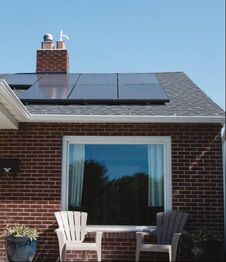 Even though the cost of going solar has plummeted in recent years, it still requires a significant upfront investment. A residential solar energy system often costs $16,000 – $25,000 or more. Fortunately for qualified homeowners, the solar tax credit can reduce the total cost by more than $4,000 or $5,000 for systems in this price range. In addition, the solar incentive significantly boosts the return on investment while reducing the payback period. Let’s explore how the solar tax credit works, who is eligible, and how to take advantage of it. What Is A Tax Credit? A tax credit is a dollar-for-dollar reduction in taxes owed to the federal government. Therefore, a $5,000 tax credit reduces income taxes to the IRS by $5,000. However, a tax credit has no value to the taxpayer if they have no tax liability. By contrast, a write-off or a tax deduction reduces total taxable income rather than the tax liability by the given amount. Unlike a tax credit, the value of a write-off depends on your tax rate. Therefore, tax credits are more valuable to the taxpayer than a write-off of the same amount. By Sarah Lozanova, Solar Writer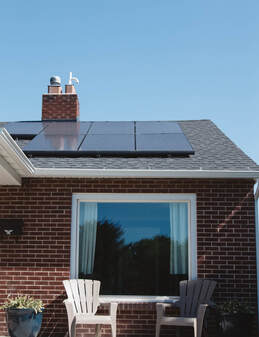 Solar energy installations have skyrocketed in recent years; it’s likely there are some in your neighborhood. One of the reasons solar power has become so popular is the cost of solar systems has plummeted in the last decade or two. As a result, many more households can afford to install solar. But just how much will a solar system cost? Many homeowners want to get a sense of the cost before having a solar company inspect their property or giving away their personal information online. Ballpark Solar System Cost According to Energy Sage, the average solar system costs about $2.77 per watt installed. This price covers labor, permitting, solar panels, the inverter, and other solar equipment, but prices may vary by the installer, solar panel location, and equipment. The size of your solar energy system will be determined by your total electricity usage, available space for installing solar panels, and budget. To determine how much electricity you use, review your electric bills for the past year or more. The average home needs about a 6 kilowatt (kW) solar system, which costs roughly $17,000 before incentives. If you can take advantage of the federal solar tax credit in 2022, you can receive a tax credit for 26% of the total system cost. If you install your system in 2023, then the solar tax credit is 22% of the total cost. Speak with a tax expert to ensure you can take advantage of the tax credit. By Sarah Lozanova, Solar Marketing Writer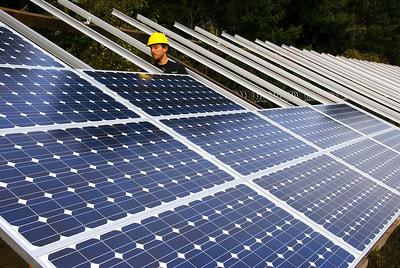 If something seems too good to be true, it usually is. If you’ve been shopping for solar panels, you may have seen advertisements for free solar panels. This seems like an amazing offer because the upfront cost of a solar system can be more than $20,000 before incentives. Are these scams or are they the real deal? We’ll discuss whether these offers are too good to be true and explore some alternatives that might provide you better value in the long run. Are Free Solar Panels Really Free? Offers for free solar actually involve leasing a solar system or entering into a power purchase agreement (PPA) with a solar provider. If you read the fine print, you need to make ongoing payments, often for around twenty years. A solar lease involves renting the equipment and making monthly payments for its use. However, having solar panels will typically significantly reduce the home electric bills so the savings might cover the rent for the panels. Although solar leases might be a good opportunity for some households, the panels really aren’t free. By Sarah Lozanova, Solar Writer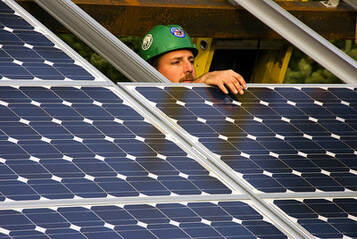 Despite the COVID-19 pandemic, the solar energy industry has been remarkably resilient. Rapid technology improvements, government incentives for solar panels, and the increasing competitiveness of solar energy storage batteries have helped boost clean energy deployment. Although 2022 does seem like a very promising year for solar energy installations, there are some potential hurdles along the way. So, what should you expect for 2022, and how can you prepare? Identifying upcoming trends can help your company be adaptive to the changing business climate in 2022 and beyond. Solar Technology Will Continue To Improve Solar panels continue to become more efficient, enabling homes and businesses to produce more electricity in a limited space. Increasingly, solar PV panels are lighter weight, have a sleeker appearance and thinner profile, making them more visually appealing. In addition, solar shingles are becoming more widespread, and there are more available products than ever before. Despite these improvements, solar energy costs seem to be remaining relatively stable. 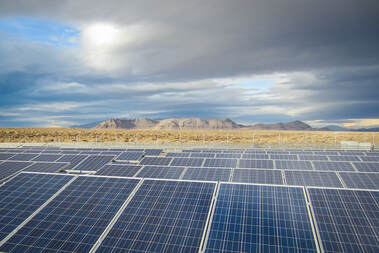 By Sarah Lozanova, Solar PV Writer U.S. solar generation capacity is soaring. Construction began recently on the Samson Solar Energy Center, the largest planned solar energy farm in the United States. When completed, the solar farm will have 1,013 megawatts of generating capacity. This solar farm will be considerably larger than the 690 MW Gemini solar project with battery storage under construction outside of Las Vegas, which had been the largest project in the U.S. Invenergy is developing the Samson solar farm, which will span three counties in Northeast Texas near the Oklahoma border. The project will create an estimated 600 construction jobs and $450 million in tax revenue and landowner lease payments. Developers are planning construction in five phases, with a 2023 expected completion date. Texas is a leader in renewable energy production in the U.S. due to its excellent solar and wind energy resources. It leads in the nation in installed wind energy capacity and trails California for installed solar energy capacity. 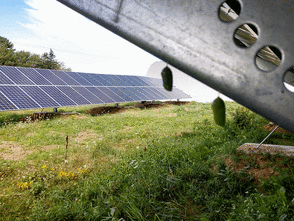 By Sarah Lozanova, Solar Energy Writer A big concern with large-scale solar farms is the impact on land use. Solar developers often site projects on agricultural land that is taken out of production. Also, the vegetation around solar panels needs to be maintained to prevent shading. In some cases, herbicides are used, contaminating waterways, and mowing generates pollution. If the developer applies gravel or plants turfgrass, the land has little wildlife value. As the local food movement gains steam, isn’t it counterproductive to turn productive cropland into an energy plant? How can the solar energy industry embrace biodiversity while producing clean energy? Is dual use of a solar site possible? Solar farms can be managed to increase pollinator habitat, improve soil quality, and even for livestock grazing. Innovative land management approaches enable solar projects to serve multiple purposes, benefitting the local economy. Keeping honeybees, grazing sheep, and even cultivating mushrooms can all complement a solar energy project. Native Wildflowers Boost Pollinator Habitat Researchers with the Argonne National Laboratory are examining the economic benefits of establishing native vegetation, including wildflowers and prairie grasses, on nearby cropland. Native vegetation attracts crucial critters like bees, flies, bats, birds, wasps, moths, and butterflies, which can be beneficial to crop yields. Researchers with the Argonne National Laboratory are examining the economic benefits of establishing native vegetation on nearby cropland, including wildflowers and prairie grasses. A diverse array of native plants benefits wildlife diversity, especially pollinators. These crucial critters include bees, flies, bats, birds, wasps, moths, and butterflies, and can be beneficial to crop yields. Read More... Image Credit: Danny Piper of Sundog Solar 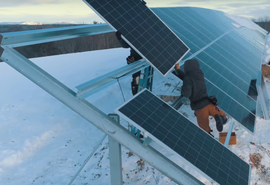 By Sarah Lozanova, Solar PV Writer There is now enough installed solar energy capacity in the U.S. to power 13.5 million homes, and this amount is expected to double in the next five years. The solar energy industry is part of a very dynamic market. Many factors — including government policies, fossil fuel costs, solar energy technology advances, commodity prices, and even public awareness of the climate crisis — impact solar energy deployment across the globe. What’s in store for the year ahead? Let’s explore some trends in solar energy to better understand what is on tap for 2020. Solar Battery Prices Are Falling Solar energy is an intermittent energy source. This means that solar panels produce power when the sun is shining and not when it isn’t. Energy storage allows the solar system to supply power when the sun has set or in cloudy weather, expanding the capabilities of solar energy systems. There are two main types of solar batteries: lead-acid batteries (like you have in your car) and lithium-ion batteries. The latter is far more advanced, longer-lasting, and requires less maintenance. Not surprising, lithium-ion batteries have a higher upfront cost, but the price has been decreasing significantly in recent years. The cost of lithium-ion battery storage fell 35 percent from the first half of 2018 to now (December 2019) and 76 percent since 2012. This downward price trend is good news for renewable solar energy in 2020 — and it’s likely to continue. Natural gas plants are often used to meet peak energy loads because they can more easily be turned on and off than coal or nuclear power plants. Lower costs make it easier for intermittent renewable energy sources — such as wind and solar — to be cost-competitive with dispatchable fossil-fired power plants. Price decreases in utility-scale battery banks now make solar plus energy storage competitive in many areas on price alone. Battery banks can make it unnecessary to fire up power plants during times of peak demand, reducing fossil fuel consumption. The greater the capabilities of solar, the less attractive and financially viable these peaker power plants become. On the residential side, more homeowners are relying on solar systems with battery storage for emergency power during grid outages than ever before. This is an especially attractive option in areas prone to extended power outages due to natural disasters or with inadequate utility infrastructure, like Puerto Rico. Read More... Image Credit: Sundog Solar Trends in Solar Energy - Clean Energy Writer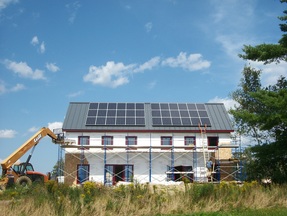 This 36-unit community may be the nation's first planned development built around Passive House green building standards. By Sarah Lozanova Even from the layout of the homes, visitors can tell something is unique about Belfast Cohousing & Ecovillage. “Where are the driveways?” one guest asks. “How strange, these houses don’t have any driveways!” Belfast Cohousing & Ecovillage (BCE) is a 36-unit intentional community on 42 acres in Midcoast Maine. Members designed the community from 2008 to 2011, before breaking ground in 2011; GO Logic, a Belfast-based design-build firm that specializes in sustainable building, designed the units and site plan and served as general contractor. The homes are clustered, and a pedestrian path, not a road, runs through the six-and-a-half-acre built area. Despite being a rural property, all the homes are located in two- to four-unit buildings and range from 500 to 1,800 square feet with one to three bedrooms. The community layout encourages social interaction, offers safety for children, and provides open space for food production, wildlife and recreation. With PV solar systems, these highly efficient homes are near net zero. PASSIVE HOUSE DESIGNS When one enters the homes, it becomes obvious that the lack of driveways is only one of many differences between these houses and the average code-built home. Despite being located in Midcoast Maine, the houses have no furnaces. Read More... |